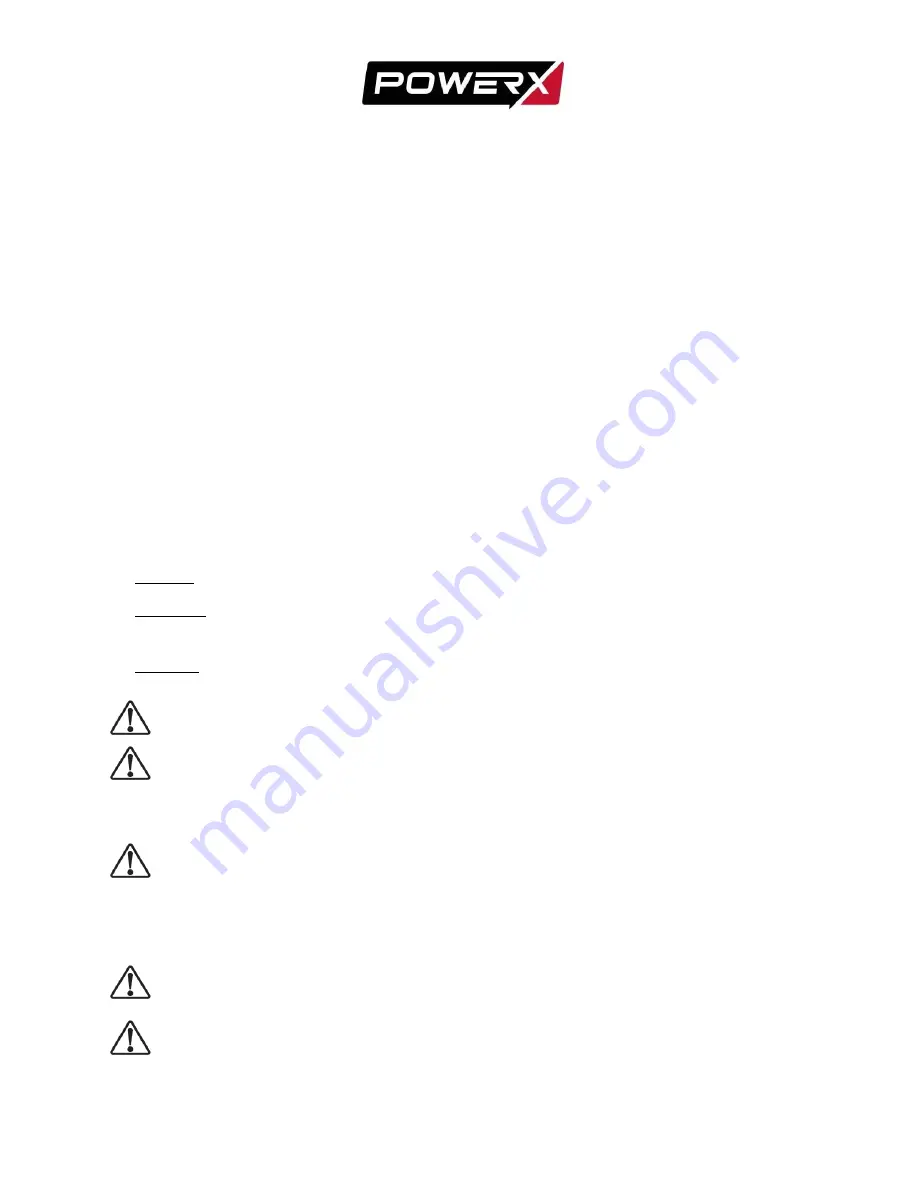
D0136 RevC
2
C19-01-01
1.0 RECEIVING INSTRUCTIONS
Important! Make sure to inspect all of the components for shipping damage. If damage is found,
notify carrier at once. Shipping damage will not be covered by warranty. The carrier is responsible
for all loss associated with shipping damage.
2.0 SAFETY
Make sure to read the instructions, warnings and precautions carefully. Follow all recommended
safety precautions to avoid personal injury or damage to the unit. PowerX cannot be responsible for
any damage or injury from unsafe use, lack of maintenance, or incorrect operation. In the event any
questions or concerns arise, contact PowerX or a local PowerX Distributor for clarification.
The pump’s maximum working pressure is 10,000 PSI (700
bar). Make sure that all hydraulic
equipment such as rams, hoses, etc. used with this pump are rated at 10,000 PSI (700 bar) operating
pressure.
If you have never been trained on high-pressure hydraulic safety, consult your distributor or service
center. Failure to comply with the following cautions and warnings could cause equipment damage,
property damage, or personal injury.
DANGER: is only used when your action or lack of action may cause serious injury or even death.
WARNING: indicates a potential danger that requires correct procedures or practices to avoid
personal injury.
CAUTION: is used to indicate correct operating or maintenance procedures and practices to
prevent damage to, or destruction of equipment, or other property.
WARNING:
Wear proper personal protective gear when operating hydraulic equipment.
WARNING:
The system operating pressure must not exceed the pressure rating of the lowest
rated component in the system. Install pressure gauges in the system to monitor operating
pressure. Gauges help the user see what is happening with the hydraulic pressure in the
system.
WARNING:
Avoid damaging hydraulic hose. Avoid sharp bends and kinks when routing
hydraulic hoses. Using a bent or kinked hose will cause severe back-pressure. Sharp bends and
kinks will internally damage the hose, leading to premature hose failure. Do not drop heavy
objects on hose. A sharp impact may cause internal damage to hose wire strands. Applying
pressure to a damaged hose may cause it to rupture.
IMPORTANT:
Do not lift hydraulic equipment by the hose or swivel couplers. Use the carrying
handle or other means of safe transport.
CAUTION:
Keep hydraulic equipment away from flames and heat. Excessive heat will soften
seals, resulting in fluid leaks. Heat also weakens hose materials. For optimum performance do






